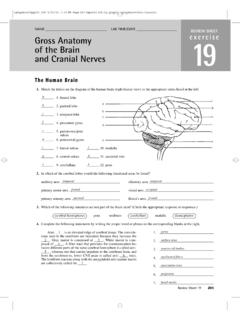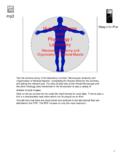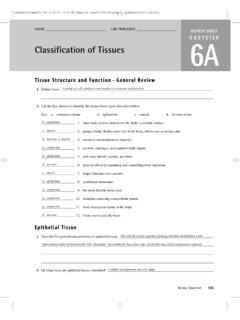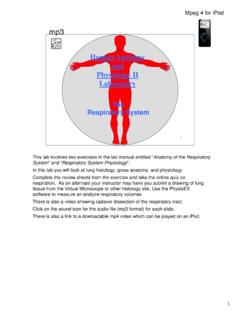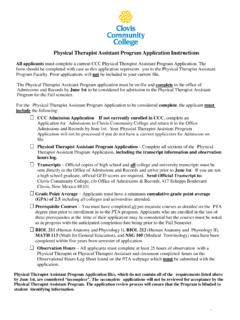Transcription of The Standard In Canine Hypoadrenocorticism Therapy
1 Canine Hypoadrenocorticism :Diagnosis and Treatment of an Emerging DiseasePERCORTEN -V(desoxycorticosterone pivalate)Injectable SuspensionThe Standard In Canine Hypoadrenocorticism TherapyCanine Addison s Disease ( Hypoadrenocorticism ) has always beenextremely difficult to diagnose. Its symptoms are so often confused with thoseof other conditions that it is known as The Great Pretender. Because CanineAddison s Disease is so under-diagnosed, it is believed to have a low preva-lence. However, with more careful screening, it may emerge as a more com-mon ailment than previously at Novartis Animal Health US, Inc.
2 Understand the importance of properly diagnosing this serious and potentially fatal disease, and have created this tech-nical monograph to serve as your definitive guide to Canine this monograph, we are proud to educate you about PERCORTEN -V(desoxycorticosterone pivalate), the only FDA-approved*product to treatAddison s Disease in dogs. If you have any questions, please contact yourNovartis Animal Health US, Inc. Representative, or Novartis Animal Health US,Inc. Professional Services at 1-800-637-0281.
3 * NADA # 141-029, Approved by of History of Addison s Clinical significance of Anatomy and Adrenal glands in health and The role of The role of glucocorticoids .. Predisposing factors .. Clinical Laboratory -V(desoxycorticosterone pivalate).. Product Clinical Dosing and Addisonian crisis dosing .. Product benefits ..15 Monitoring and asked information product Cover1234567891. History of Addison s DiseaseThe first human cases of Hypoadrenocorticism were described in the mid-1800sby an English physician, Thomas Addison, hence the name Addison s Disease.
4 1 The clinical syndrome included anemia, lethargy, poor heart function and gas-trointestinal wasn t until after the 1930s that glucocorticoids and min-eralocorticoids, then finally commercially available, were used to treat and savehumans from this otherwise fatal first Canine case of Hypoadrenocorticism was reported in that time, there were two compounds available for the treatment of Addison s Disease, DOCA and DOCP; however, neither was approved for use in dogs. By 1960, a new oral drug for treating Hypoadrenocorticism was introduced, Florinef *(fludrocortisone acetate), but again approved for human use only.
5 In 1989, Novartis Animal Health US, Inc. (then Ciba-Geigy) provided DOCP to veterinarians for use as an investigational drug to treat dogswith Addison s Clinical significance of hypoadrenocorticismHypoadrenocorticism is characterized by inadequate production of glucocorti-coids (cortisol) and/or mineralocorticoids (aldosterone) by the adrenal Hypoadrenocorticism , or Addison s Disease, results from the destructionof the adrenal cortices and is fatal when hypoadrenocorti-cism occurs when the bilateral adrenal cortex atrophies due to insufficient secretion of adrenocorticotrophic hormone (ACTH)
6 From the pituitary gland and is associated with only glucocorticoid is a serious and potentially life-threatening actual incidence of Canine adrenocortical insufficiency at onelarge veterinary hospital has been calculated at dogs per 1000. It has beensuggested that these small numbers represent under-diagnosis (rather than minimal occurrence) of the disease. On average,2in a typical practice with twoveterinarians, each of whom sees approximately 1,500 dogs per year, shouldexpect to diagnose one case of adrenal insufficiency each year.
7 It has been demonstrated that PERCORTEN-Vis well tolerated with a low incidence of side effects. In a small percentage of treated dogs, depression, excessive thirst and urination, digestive, skin and coat changes, weakness, andinjection site reactions (pain, abscesses) may occur. Some of these effects mayresolve with adjustments in dose or interval of PERCORTEN-V or concomitantglucocorticoid administration. Do not use in pregnant dogs or in dogs that are suffering from congestive heart disease, severe renal disease, or edema.
8 For additional information, please see product insert on back * Florinef is a registered trademark of Bristol-Myers many of the clinical signs of Addison s Disease resemble those of otherillnesses, it has been referred to as The Great Pretender, 3and can be an especially frustrating and challenging situation for the companion ,2 Some dogs with Addison s Disease may appear healthy and active,which can lead to misdiagnosis of the disease. The often obscure presenting signs and the subtle physical abnormalities induced by hypoadreno-corticism complicate an already difficult diagnosis.
9 However, careful observa-tion and a thorough medical history, in conjunction with specific laboratory tests,can reveal an accurate diagnosis. In cases where classic Addisonian signs areobserved hyperkalemia, hyponatremia, bradycardia and decreased blood pres-sure Hypoadrenocorticism should be strongly are many common causes of primary Hypoadrenocorticism which includea variety of etiologies. In cases where lymphocyte and plasma cell infiltration is identified in the adrenal cortex, an immune-mediated basis has been ,3 Other less common causes include.
10 Infections (coccidioidomycosis,blastomycosis, or tuberculosis), hemorrhagic infarctions, granulomatous disease,metastatic neoplasia, trauma, and ,3 Primary Hypoadrenocorticism isseen most often in young to middle-aged dogs, an interesting contrast to themany other Canine endocrinopathies, which tend to affect middle-aged to ,3 Even though any gender can be affected, females seem to be Hypoadrenocorticism in small animals is usually due to excessive orprolonged administration of exogenous these cases, normal adrenal function usually returns within a few months after gradual with-drawal of -V(desoxycorticosterone pivalate), approvedby the FDAin 1998, is the only veterinary productapproved for treating Canine Hypoadrenocorticism .
